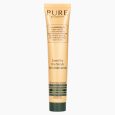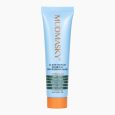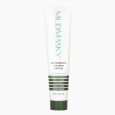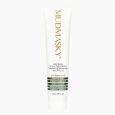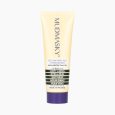Why many Europeans choose Turkey for hair transplants
Every year, tens of thousands of Europeans travel to Turkey for hair restoration. The country has become a global leader in hair transplants, offering high medical standards, experienced surgeons and competitive pricing. For many, it is the perfect combination of quality and affordability.
However, while the surgery takes place abroad, the recovery happens at home. This makes proper aftercare essential. Without the right support, the scalp may take longer to heal, and the results can be compromised. Choosing the correct products in the weeks following your transplant is one of the most important steps in the process.
1. Hydrate the scalp, but avoid oils
After a hair transplant, the scalp often becomes dry, itchy or tight. It may seem logical to use oils for relief, but oils can clog the pores and slow down healing. Scientific research confirms that product build-up and excess sebum can reduce oxygen flow to the follicle, interfering with growth [1].
The better solution is a non-oily, fast-absorbing serum that provides hydration without blocking the follicles. This allows the skin to breathe and recover more effectively.
2. Use vitamins to support recovery
Topical vitamins such as Pro-Vitamin B5, Vitamin C and Vitamin E are known to improve scalp health. They can reduce inflammation, restore moisture and support the development of stronger, healthier hair [2][3].
These vitamins may help:
-
Stimulate circulation around the hair root
-
Reduce redness and irritation
-
Support early follicle development
Applying these vitamins directly to the scalp helps deliver nutrients exactly where they are needed.
3. Avoid heavy products and synthetic ingredients
Many cosmetic products contain ingredients that are not suitable for sensitive post-procedure skin. Petroleum, silicones, strong perfumes and alcohols can irritate the scalp and increase the risk of complications.
The International Society of Hair Restoration Surgery recommends using only gentle, clean, and non-irritating products during the recovery period [4].
4. Maintain the scalp’s natural pH
Healthy skin has a pH of around 5. If the scalp becomes too alkaline or too acidic, it can lead to discomfort or bacterial imbalance. A pH-balanced scalp treatment protects the skin’s natural barrier and supports its healing process [5].
This is especially helpful for people in Europe who may live in regions with hard water or dry winter climates, which can further irritate the skin.
5. Support the roots, not just the hair
After a transplant, your focus should not be on the visible hair, but on the follicle beneath the surface. That is where new growth begins. A scalp product that supports circulation and reduces inflammation can help the grafts settle and thrive.
A healthy root system is the foundation for long-term hair growth.
Final thoughts
Whether you had your transplant in Istanbul, Milan, Madrid or beyond, the key to strong results is what you do afterwards. Avoid thick creams, greasy oils and synthetic ingredients. Choose a non-oily, vitamin-rich, pH-balanced scalp treatment designed specifically for post-transplant recovery.
One example of such a product is the MUDMASKY Vitamin-Infused Scalp Serum, trusted by hair surgeons in Turkey and now used across Europe to support healing and healthy regrowth.
About the Author
Dr Lucas van der Meer is a trichologist and cosmetic product consultant based in Amsterdam. With over 15 years of experience, he advises beauty and haircare brands across Europe on science-led solutions for scalp health and hair restoration.
Sources:
[1] Draelos, Z D. (2010). Hair cosmetics: An overview. Dermatologic Clinics, 28(1), 71 to 78.
[2] Lachapelle, J M. (1990). Vitamin E and skin irritations. Contact Dermatitis, 22(3), 174 to 179.
[3] Gehring, W. (2004). Topical use of panthenol in skin disorders. Journal of Dermatological Treatment, 15(1), 3 to 6.
[4] ISHRS.org. (2022). Postoperative Care Guidelines After Hair Transplantation. Retrieved from www.ishrs.org
[5] Lambers, H, et al. (2006). Natural skin surface pH is on average below 5, which is beneficial for its resident flora. International Journal of Cosmetic Science, 28(5), 359 to 370.
Disclaimer:
This article is for general informational purposes only and does not replace professional medical advice. Always consult your surgeon or healthcare provider before applying any product to your scalp following a medical procedure. Individual results may vary. Mudmasky does not make any medical claims or offer medical treatment.
